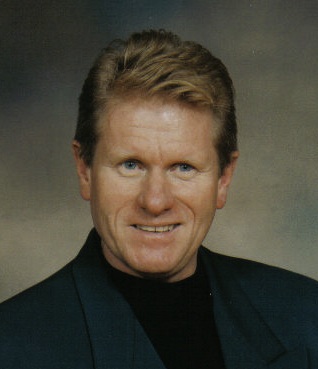
 “Malpractice: The breach by a member of a profession of either a standard of care or a standard of conduct”
“Malpractice: The breach by a member of a profession of either a standard of care or a standard of conduct”
How often have you seen patients whose condition prior to consulting you had worsened due to lack of or inappropriate care? How many patients in your office have elected to consult a medical doctor prior to seeking chiropractic treatment, and their respective conditions actually deteriorated due to treatment deficiencies or receiving the wrong care? How much unnecessary suffering, disability and expense do you suppose this creates? Finally, why are medical practitioners allowed far greater leeway when the question of the correctness of patient transfer to a chiropractor is concerned than when the tables are turned and a chiropractor is challenged on grounds of not appropriately referring to a medical doctor?
We appear to have a double standard here that I believe has no basis in
logic or nothing that professional expertise or credentials can
substantiate. Chiropractors are regulated health professionals just as
medical doctors are. Our teaching institutions are accredited and our
licensing boards governed by the same principles and laws of conduct as
any of the other regulated professions. So, why the paradox?
Negligence
is the predominant theory of liability concerning allegations of
medical malpractice. It is essentially accepted that a person who
alleges negligent medical malpractice must prove four elements: 1) a
duty of care was owed by the health-care provider; 2) the practitioner
violated the applicable standard of care; 3) the person suffered a
compensable injury; 4) the injury was caused in fact and proximately by
the substandard conduct – all with the burden of proof being carried by
the plaintiff.
According to the law, all regulated health-care
practitioners owe a duty of care to those who seek their treatment. To
date, this is rarely an issue in malpractice litigation because, once a
doctor agrees to treat a patient, he or she has a professional duty to
provide competent care.
Causation may also be a vigorously
litigated issue because a practitioner may allege that the injuries were
caused by physical factors unrelated to the allegedly negligent
treatment.
Finally, the critical element centres around standards
of care, which involves the type of treatment that a health-care
provider is expected to provide. Up until the advent of Health
Disciplines legislation in the later part of the 20th century, standards
of care were traditionally regarded as the customary or usual practice
by members of regulated profession. Subsequent to the advent of formal
health-care legislation, provision of services by a profession and the
standards by which that care is provided have been entrenched in law.
In
medical malpractice trials, physicians are traditionally called in to
testify as expert witnesses because the jury or judge is not familiar
with the intricacies of health provision. The purpose is to find
evidence of non-conformance to established standards of care to support
charges of negligence – whereas a finding of conformance supports a
finding of due care. It is here that the basis of the double standard
lies. Medical opinion is almost invariably used in cases of chiropractic
malpractice as a major determinant to appropriateness of care.
Interestingly, I find little evidence to the contrary, where a
chiropractic opinion has been given weight in the determination of
appropriateness of care for a medical practitioner in litigation
involving a question of potential negligence in the management of a
failed back or neck case.
Now it gets more interesting.
There
are other rules that govern the standard of care evaluation for
physicians. In some jurisdictions, the “respectable minority rule” is
applied in evaluating a physician’s conduct. This rule holds that a
physician is not negligent merely by electing to pursue one of several
recognized courses of treatment.
Some juristictions use the
“error in judgment rule.” This principle exempts a physician from
liability if the malpractice is based upon his or her error in judgement
in choosing among the different methods of treatment or in diagnosing a
condition.
I would suggest that both of these unofficially hold
true as well in the Canadian judicial system, when applied to the
appropriateness of referral to a chiropractor.
An argument that
seems to prevail when unofficially questioning medical doctors why they
fail to refer to chiropractors finds root in the growing trend for
physicians to practice “defensive medicine,” in order to guard against
malpractice claims. The logical question back is: When is it not
malpractice to ensure that the best interests of your patients are
addressed? When is it not negligence to be aware of the scope and
expertise of another fully regulated health profession? When is the
practice of defensive medicine no longer in the public interest and of
and by itself malpractice?
All of the above is essentially
moot because even though we are led to believe that professions
regulated to practice health care do so on a level playing field, those
of us in daily practice know this to be a ruse. My point here is simple:
It seems perfectly fair to expect that if someone other than a
chiropractor is invested with the right to determine the appropriateness
of chiropractors' clinical competency, then they should be held with
equal accountability in the failure to refer to a chiropractor when
clinically appropriate.
“I’ve believed as many as six impossible things before breakfast.”— Lewis Carroll, Alice in Wonderland
—–
Dr. Pooley graduated from CMCC in 1978 and has been in practice in St. Thomas, Ont., where, 14 years ago, he created Canada’s first true comprehensive natural health care centre. He has served as president of both the Ontario Chiropractic Association and the Canadian Chiropractic Association. He was elected to the CCO in 2008 and sits on the CCO patient relations committee.
Print this page